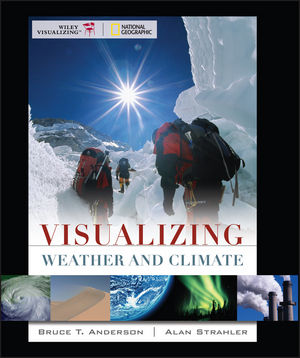|
Textbook
Visualizing Weather and ClimateISBN: 978-0-470-14775-7
Paperback
528 pages
September 2008, ©2009
 |
||||||
- Learning Objectives at the beginning of each section head indicate in behavioral terms what the student must be able to do to demonstrate mastery of the material in the chapter.
- Visualizing Features are specially designed multi-part visual spreads that focus on a key concept or topic in the chapter, exploring it in detail or in broader context using photos and figures.
- Concept Check questions at the end of each section give students the opportunity to test their comprehension of the learning objectives.
- Marginal Glossary Boxes introduce each chapter s most important terms, often reinforced with a thumbnail photograph.
- What a Scientist Sees highlight a concept or phenomenon, using photos and figures that would stand out to a professional in the field, and help students develop observational skills.
- Process Diagrams present a series of figures or a combination of figures and photos that describe and depict a complex process, helping students to observe, follow and understand the process.
- The illustrated Case Studies that cap off the text sections of each chapter offer a wide variety of in-depth examinations that address important issues in the field of environmental science.
- Illustrations, Photos, and Cartoons support concepts covered in the text, elaborate relevant issues, and add visual detail. Many of the photos originate from National Geographic s rich sources.
- Global Locator Maps, prepared specifically for this text by National Geographic, accompany figures addressing issues encountered in a particular geographic region.
- Tables and graphs, with data sources cited at the end of the text, summarize and organize important information.
- Critical Thinking Questions encourage critical thinking and highlight each chapter s important concepts and applications.
- The Chapter Summary revisits each learning objective and redefines each marginal glossary term, featured in boldface here, and included in a list of Key Terms.
- Self Tests, often including a visual, help students evaluate their readiness to move on to the next chapters, and to prepare for classroom quizzes and exams.



